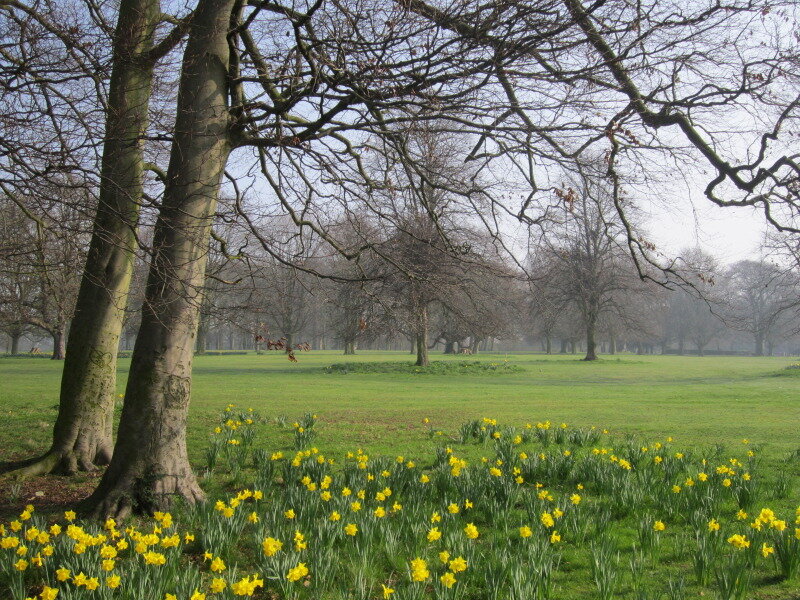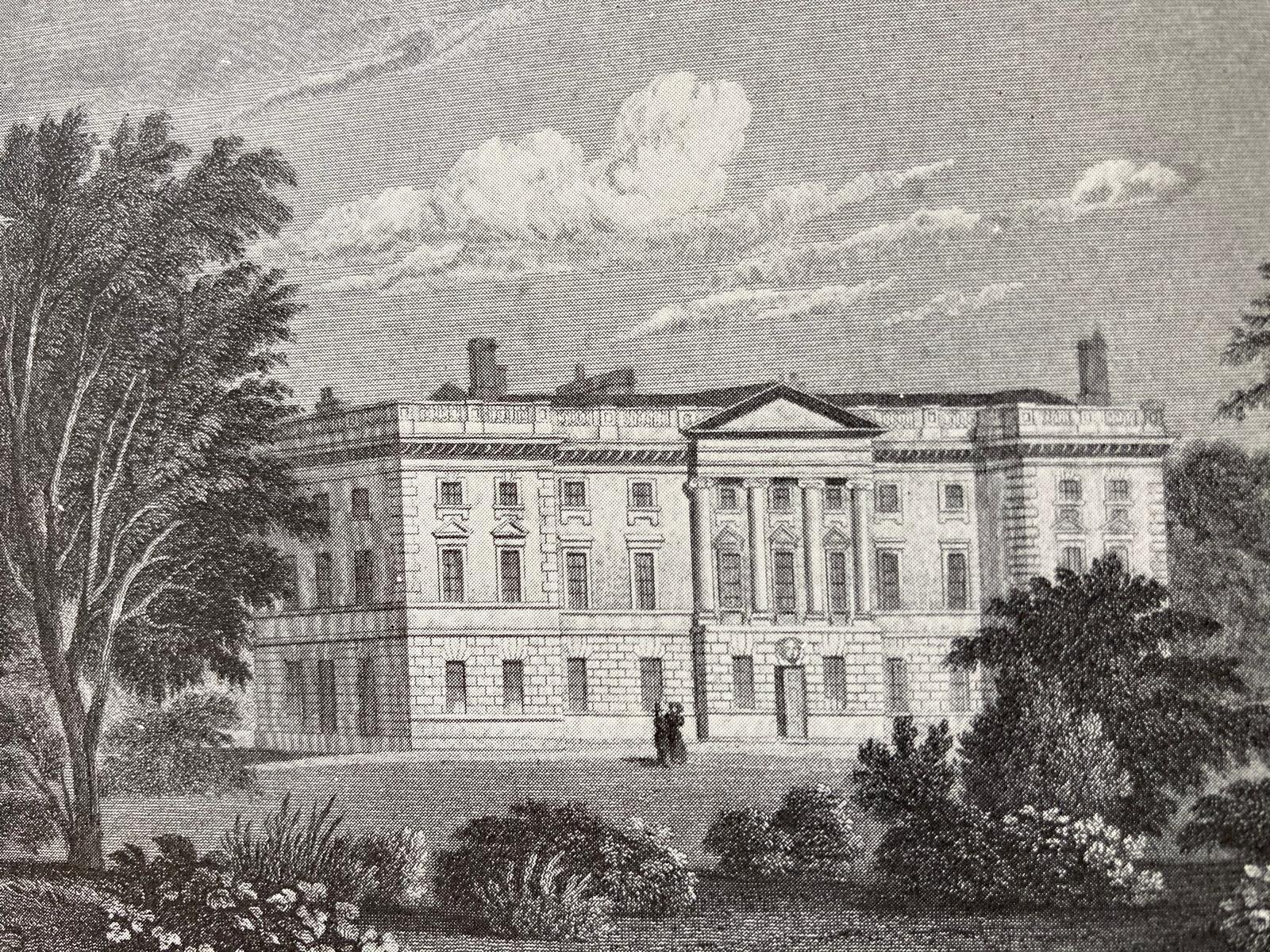5 Parks to visit with your OPF takeout
Note: This was originally published in July 2020, in the peak of a global lockdown and we were operating as a takeout only business and tried to bring our community back together in trying times, enjoy.
I think it’s safe to say that we’ve all been walking and using our local parks & greenspaces a lot more lately. During the height of lockdown Dean and I were relying on our daily exercise walk each day, we utterly understand why dogs react the way they do when they hear the word “walk” or “park”. A lot of us rely on parks for our mental wellbeing too, I can hear my Grandma saying the phrase ‘fresh air does you the world of good’ and it’s true being surrounded by nature does wonders for us; inside and out. As One Percent Forest is not yet open for ‘sit ins’ we thought it would be a nice idea for us to share our favourite places you can walk and take your coffee & food to enjoy.
Reynolds Park
🌳 0.4mi 👣 9 min 🚗 2 min
The park takes its name as the legacy of the Reynolds family. James Reynolds was a wealthy cotton broker, owning not only Reynolds Park but also a Welsh Castle and Levens Hall, Cumbria. Although over the military age he served in France during WW1 and was awarded the DSO. He was knighted in 1920 and was bestowed with a Baronetsy. During the 1920s he was elected as an MP for Liverpool. Sir James Reynolds donated the estate to the city in 1929 as he did also with Woolton Woods *see within Woolton Woods/Camphill section. He died in 1932, being buried in St Mary’s Churchyard, Woolton.
Sir Charles Reilly (Head of the School of Architecture at Liverpool University 1904-33) designed the Yew Garden in a fashionable ‘European Modernism’ style. The unique topiary feature was laid out in the late 1920s and was once a popular outdoor space for dinner parties. A beautiful park, popular for picnics and dog walkers. The main feature of the park is the walled garden, which probably provided the mansion house with kitchen produce. The garden is known as being a prestigious area for summer bedding plants, herbaceous borders and in particular is noted for its dahlia displays. Our fave spot: We absolutely love sitting in the walled garden late August/early Sep time when it’s full of the most cheerful looking dahlias. The colours of them all just make you feel so happy. We would recommend going there this summer to see them.
Woolton Woods/Camphill
🌳 0.2mi 👣 4 min 🚗 1 min
Camphill as the name suggests lies on high ground with great views of the Mersey and the hills of North Wales. It is reputed to be the site of one of the oldest settlements on Merseyside.
The present 22-hectare Woolton Woods originally formed part of the estate of Woolton Hall, which from 1772 was owned by the Ashton family, well known prominent Liverpool citizens. By 1871 the Gaskell family were resident at Woolton Wood. Holbrook Gaskell was a chemical industrialist and an art and plant collector – a keen orchid grower. The last owner of Woolton Woods was Col James P Reynolds, he dedicated most of Woolton Woods to Liverpool in recognition of the privilege he felt in living in a beautiful residential district for over 50 years of his life. Woolton Wood and Camphill combine to create a park landscape unlike any other in the city. The blend of semi-natural, mature woodland, garden areas and grassland are embellished by outstanding views. The main entry to the Park from High Street is known as Coronation Drive it was dedicated to celebrating King George V’s coronation, various species of trees were planted either side of the pathway in 1911.
The Floral Cuckoo Clock in the Old Walled Garden was a great attraction to the park. Presented to the public in 1927 by the Gaskell family in memory of the long connection they had with Woolton Wood. The clock was made by James Ritchie & Sons of Princes Street Edinburgh, a similar design to one at Edinburgh Princes Gardens. The floral dial measured 12ft in diameter. The clock hands were troughs made out of copper. The mechanism must have been extremely strong due to weight of it. This feature required a total of 18,670 plants. The underground mechanism linked to a tower and on every quarter of the hour bellows provided the sound of a cuckoo call. It contained the quotation ‘midst leaves and flowers are called the hours’ It brought many people to the park to see it. It no longer actually works as a clock but remains a feature of the garden.
One of the interesting features of Camp Hill was the Dutch Garden of Meditation created in 1928. The pool and garden ornaments have long disappeared but it’s still a sheltered and tranquil spot, known as ‘The Sunken Garden’. One fave spot: We love having a walk through Woolton Woods early June and collecting some of the elderflower growing there, we’ve used it in cocktails at OPF in the past. And you just can’t beat that view at the top of Camphill.
Allerton Tower (0.4mi)
🌳 0.4mi 👣 7 min 🚗 2 min
In 1849 a foundation stone was laid for Allerton Tower. The grounds were owned by Hardman Earle, he used a design of Harvey Lonsdale Elmes the young architect of St. Georges Hall. Hardman Earle was so impressed with the building especially the tower that he purchased surround land to preserve the view. The property continued in the hands of the Earle family until 1924. Among many of the guests were Winston Churchill & H.H. Asquith.
Allerton Tower stood empty for some years. The grounds were open to the public, but due to dry rot and vandalism it was made necessary that Allerton Tower should be demolished, despite pleas to save it. Now all that remains of the house is the orangery set in the gardens. Allerton Tower is 35-acre park, it’s a great spot for a short walk. Its features include a partial walled garden, a path full of spectacular rhododendrons and its very recently had a new playground installed at the Menlove Avenue entrance. Our fave spot: The orangery – is beautiful around sunset; we’ve got some great photos there. You feel like you are transported in time to a Jane Austin novel era.
Clarke Gardens (0.7mi)
🌳 0.7mi 👣 14 min 🚗 3 min
Allerton Hall stands in the grounds of Clarke Gardens. Its earliest mention dates back to 1241 and the Manor of Allerton. The estate provided a home for several families during its long history.
William Roscoe is one of the most famous residents. He was a banker, lawyer and briefly a member of parliament. He was known for being outspoken about the slave trade, in a time when fellow men were making a lot of money. During his short time in parliament he was able to vote in favour of the successful abolition of the slave trade. Earlier he led a group of Liverpool Botanists who created the Liverpool Botanic Garden, remnants of the collection can still be found in the walled garden at Croxteth Park. Unfortunately, complications with funds meant that William had to sell Allerton Hall on.
A man named Thomas Clarke a Liverpool tobacco merchant later came into the hands of Allerton Hall and it was his wife who donated the house and land to Liverpool in 1926 and that formed ‘Clarke Gardens’ as we know today.
The hall was used as the regional headquarters of the National Fire Service during the second world war. Today the hall is a Grade II listed building and better known as the ‘Pub in the Park’. You can have a walk around Clarke Gardens and end it with a pint in hand within a building full of history. Our fave spot: Springtime is the one for us, Clarke Gardens has an immense number of Daffodils that will be sure to put a smile on your face.
Calderstones Park (1.1mi)
🌳 1.1mi 👣 22 min 🚗 5 min
The parkland was once part of the 1583-acre expanse of the ‘Manor of Allerton’. The area now known as Calderstones passed through various owners until 1828 when the old farmhouse was replaced by the present Mansion House.
The park is named after The Calder Stones; six Neolithic sandstone boulders found on the land. The stones are believed to have formed a burial mound or ‘tumulus’ near the main park entrance (Menlove Avenue). They’re likely to be over 4000 years old. In 1875 the estate was acquired by Charles MacIver a Liverpool shipping magnate who along with his brother joined Samuel Cunard in establishing the ‘British and North American Royal Steam Packet Company) – later better known as the Cunard Line. Calderstones was sold in 1902 and formally opened as a park three years later.
In 1931 the broad avenue leading from the Four Seasons Gate to Yew Tree Road was established and given the title ‘Jubilee Drive’. Major construction was underway creating the boating lake which opened in 1933. A later innovation was the construction of the open-air theatre at the rear of the Mansion House. A wide variety of acts appeared on stage for nearly 30 years, sadly by 1971 poor attendances at the theatre resulted in the curtain falling on one of the parks most lively features.
In 1964 saw the creation of Liverpool’s (third) Botanic Garden with the establishment of a new glasshouse complex. The botanical importance of the park encouraged further horticultural improvements such as the creation of a Japanese Garden and the ‘Bog Garden’ near the lake. In 1998 a much-improved children’s play area was opened in memory of Linda McCartney. The opening was attended by Sir Paul McCartney and a commemorative tree planted for Linda. Calderstones Park has long been revered as ‘Liverpool’s most beautiful park’. It has so many incredible features; Allerton Oak, claimed to be over 1000 years old. In 2019 it won English Tree of the year.
Jets Memorial in the flower garden, Jet the dog was awarded the animal Victoria Cross for his wartime rescue, he loved the park.
With in the last year the Mansion House has been reopened by The Reader Organisation after undergoing a big renovation. It now contains a beautiful area that can be hired out for weddings and events, a much bigger café, meeting rooms, craft rooms, rooms for yoga, a shop, an incredible room dedicated to the history of the park, the Calder Stones have been encased on show here and the open air theatre updated and brought back. This recent work has been a great development for the park and looks absolutely fantastic.
If you haven’t been already be sure to have a wander around, grab an ice cream from the Old Barn or have fish and chips outside the Mansion House.
Our fave spot: Calderstones is our favourite park. I have a great love for it, growing up living just down the road, walking around it every day and it is where my Mum and Dad worked and met each other. One of our favourite places in the park is the Herbaceous Border, we find it incredible how during winter it can just be soil and come Summer its a 2 metres high range of stunning plants.
We have a great love for our local parks and would very much appreciate them being treated with respect. Please dispose of your rubbish carefully. All our packaging is compostable. Let’s look after the environment that’s looked after us!
If you would like to learn more about our incredible Parks and Greenspaces then feel free to get in touch with us. Hannah’s Dad, Nigel has worked in the Liverpool Council departments of Parks and Greenspaces for over 30 years and has an immense amount of knowledge and resources to share.
















